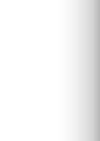1. Nash G, Charetana N, Cholada T, Anutra A, Phusit P, Pongcham R. Vibriosis and its control in pond-reared Penaeus monodon in Thailand. Asian Fish Soc. 1992;10:143-5. [
Link]
2. Chrisolite B, Thiyagarajan S, Alavandi SV, Abhilash EC, Kalaimani N, Vijayan KK, et al. Distribution of luminescent Vibrio harveyi and their bacteriophages in a commercial shrimp hatchery in south India. Aquaculture. 2008;275(1-4):13-9. [
Link] [
DOI:10.1016/j.aquaculture.2007.12.016]
3. Austin B. Vibrios as causal agents of zoonoses. Vet Microbiol. 2010;140(3-4):310-7. [
Link] [
DOI:10.1016/j.vetmic.2009.03.015]
4. Baticados MCL, Lavilla-Pitogo CR, Cruz-Lacierda ER, De La Pena LD, Sunaz NA. Studies on the chemical control of luminous bacteria Vibrio harveyi and V. splendidus isolated from diseased Penaeus monodon larvae and rearing water. Dis Aquat Org. 1990;9(2):133-9. [
Link] [
DOI:10.3354/dao009133]
5. Mortezaei SNS, Kor NM, Tamjidi B, Jahanshahi AA. Bacterial contamination in shrimp farms in Abadan area. Pajouhesh Va Sazandegi. 2008;20(2):160-5. [Persian] [
Link]
6. Guzman GA, Ascencio F. Infectious disease in shrimp species with aquaculture Potential. Recent Res Dev in Microbiol. 2000;4:333-48. [
Link]
7. Rengpipat S, Phianphak W, Piyatiratitivorakul S, Menasveta P. Effects of a probiotic bacterium on black tiger shrimp Penaeus monodon survival and growth. Aquaculture. 1998;167(3-4):301-13. [
Link] [
DOI:10.1016/S0044-8486(98)00305-6]
8. Abraham TJ, Manley R, Palaniappan R; Dhevendaran K. Pathogenicity and antibiotic sensitivity of luminous Vibrio harveyi isolated from diseased penaeid shrimp. J Aquac Trop, 1997;1:1-8. [
Link]
9. Ashraf M, Aklakur M, Sharma R, Ahmad Sh, Khan M. Nanotechnology as a novel tool in fisheries and aquaculture development: A review. Iran J Energy Environ. 2011;2(3):258-61. [
Link]
10. Chaloupka K, Malam Y, Seifalian AM. Nanosilver as a new generation of nanoproduct in biomedical applications. Trends Biotechnol. 2010;28(11):580-8. [
Link] [
DOI:10.1016/j.tibtech.2010.07.006]
11. Dabbagh MA, Moghimipour E, Ameri A, Sayfoddin N. Physicochemical characterization and antimicrobial activity of nanosilver containing hydrogels. Iran J Pharm Res. 2007;7(1):21-8. [
Link]
12. Kim JS, Kuk E, Yu KN, Kim JH, Park SJ, Lee HJ, et al. Antimicrobial effects of silver nanoparticles. Nanomed Nanotechnol Biol Med. 2007;3(1):95-101. [
Link] [
DOI:10.1016/j.nano.2006.12.001]
13. Soltani M, Esfandiary M, Sajadi MM, Khazraeenia S, Bahonar AR, Ahari H. Effect of nanosilver particles on hatchability of rainbow trout (Oncorhynchus mykiss) egg and survival of the produced larvae. Iran J Fish Sci. 2011;10(1):167-78. [
Link]
14. Soltani M, Ghodratnema M, Ahari H, Ebrahimzadeh Musavi HA, Atee M, Dastmalchi F, et al. The inhibitory effect of silver nanoparticles on the bacterial fish pathogens, Streptococcus iniae, Lactococcus garvieae, Yersinia ruckeri and Aeromonas hydrophila. Int J Vet Res. 2009;3(2):137-42. [
Link]
15. Mei F. Coating of silver film onto the inner pore surfaces of the reticulated alumina by an electroless plating method [Dissertation]. Cincinnati: University of Cincinnati; 2000. p. 94. [
Link]
16. Lv Y, Liu H, Wang Z, Liu Sh, Hao L, Sang Y, et al. Silver nanoparticle-decorated porous ceramic composite for water treatment. J Membr Sci. 2009;331(1-2):50-6. [
Link] [
DOI:10.1016/j.memsci.2009.01.007]
17. Chaudhuri M, Verma SR, Gupta A. Performance evaluation of ceramic filter candles. J Environ Eng. 1994;120(6):1646-51. [
Link] [
DOI:10.1061/(ASCE)0733-9372(1994)120:6(1646)]
18. Clasen TF, Brown J, Collin S, Suntura O, Cairncross S. Reducing diarrhea through the use of household-based ceramic water filters: A randomized, controlled trial in rural Bolivia. Am J Trop Med Hyg. 2004;70(6):651-7. [
Link] [
DOI:10.4269/ajtmh.2004.70.651]
19. Oyanedel-Craver VA, Smith JA. Sustainable colloidal-silver-impregnated ceramic filter for point-of-use water treatment. Environ Sci Technol. 2007;42(3):927-33. [
Link] [
DOI:10.1021/es071268u]
20. Jain P, Pradeep T. Potential of silver nanoparticle‐coated polyurethane foam as an antibacterial water filter. Biotechnol Bioeng. 2005;90(1):59-63. [
Link] [
DOI:10.1002/bit.20368]
21. Ghahremani M, Kalbassi MR, Soltani M, Johari SA. Application of granule and filament silver zeolite (zeomic) in water filteration system for infection conterol of Streptococcus iniae in fry rainbow trout. Iran Vet J. 2013;8(4):83-93. [Persian] [
Link]
22. Heidarpour F, Ghani WAWAK, Fakhru'l-razi A, Sobri S. New trends on microbiological water treatment. Dig J Nanomater Biostruct. 2011;6(2):791-802. [
Link]
23. Mpenyana-Monyatsi L, Mthombeni NH, Onyango MS, Momba MNB. Cost-effective filter materials coated with silver nanoparticles for the removal of pathogenic bacteria in groundwater. Int J Environ Res Public Health. 2012;9(1):244-71. [
Link] [
DOI:10.3390/ijerph9010244]
24. Asghari S, Johari SA, Lee JH, Kim YS, Jeon YB, Choi HJ, et al. Toxicity of various silver nanoparticles compared to silver ions in Daphnia magna. J Nanobiotechnol. 2012;10:14. [
Link] [
DOI:10.1186/1477-3155-10-14]
25. Johari SA, Kalbassi MR, Soltani M, Yu IJ. Toxicity comparison of colloidal silver nanoparticles in various life stages of rainbow trout (Oncorhynchus mykiss). Iran J Fish Sci. 2013;12(1):76-95. [
Link]
26. Rahman Nia J, Inventor. Preparation of colloidal nanosilver. United States patent US 7892317B2. 2011 February 22. [
Link]
27. Mirbakhsh M, Afsharnasab M, Khanafari A, Razavi MR. Molecular identification of Vibrio harveyi from larval stage of Pacific white shrimp (Litopenaeus vannamei) Boone (Crustacea: Decapoda) by polymerase chain reaction and 16S rDNA sequencing. Iran J Fish Sci. 2014;13(2):384-93. [
Link]
28. Lv Y, Liu H, Wang Z, Hao L, Liu J, Wang Y, et al. Antibiotic glass slide coated with silver nanoparticles and its antimicrobial capabilities. Polym Adv Technol. 2008;19(11):1455-60. [
Link] [
DOI:10.1002/pat.1138]
29. Chen L, Zheng L, Lv Y, Liu H, Wang G, Ren N, et al. Chemical assembly of silver nanoparticles on stainless steel for antimicrobial applications. Surf Coat Technol. 2010;204(23):3871-5. [
Link] [
DOI:10.1016/j.surfcoat.2010.05.003]
30. Phoung Phong NT, Thanh NVK, Phuong PH. Fabrication of antibacterial water filters by coating silver nanoparticles on flexible polyurethane foam. J Phys Conf Ser. 2009;187(1):012079. [
Link] [
DOI:10.1088/1742-6596/187/1/012079]































 1, M. Nafisi Bahabadi2
1, M. Nafisi Bahabadi2  , M. Mirbakhsh3
, M. Mirbakhsh3  , Kh. Niknam4
, Kh. Niknam4  , S.A. Johari5
, S.A. Johari5  , E. Mohammadi Baghmollaii6
, E. Mohammadi Baghmollaii6 
